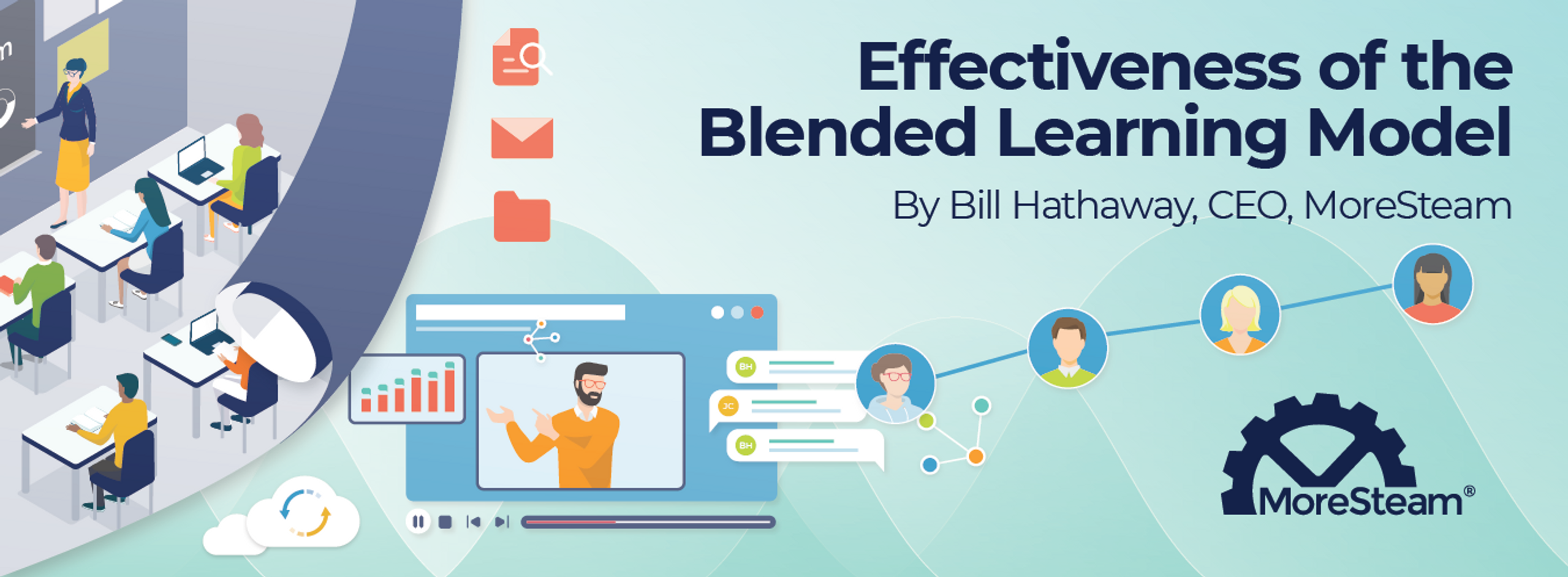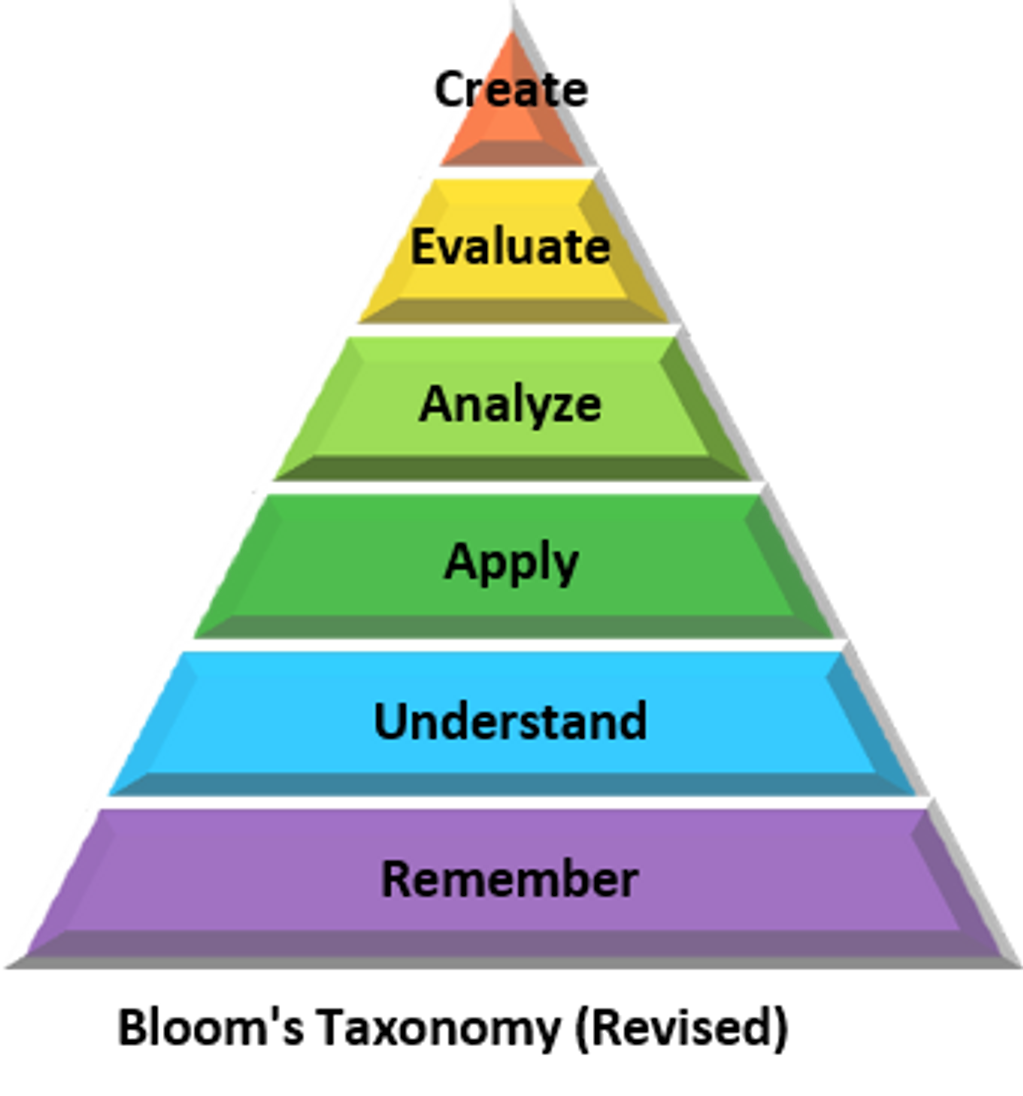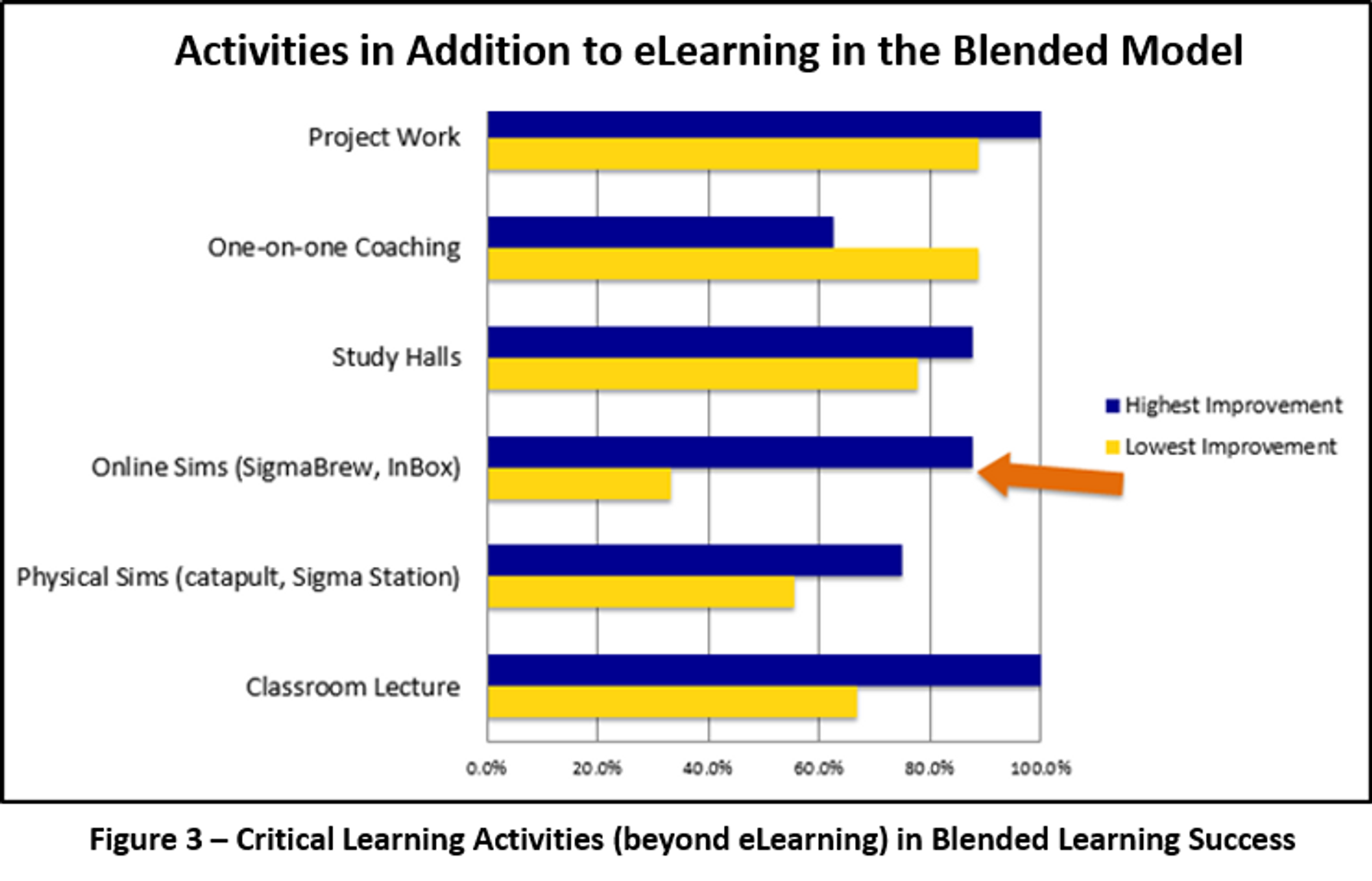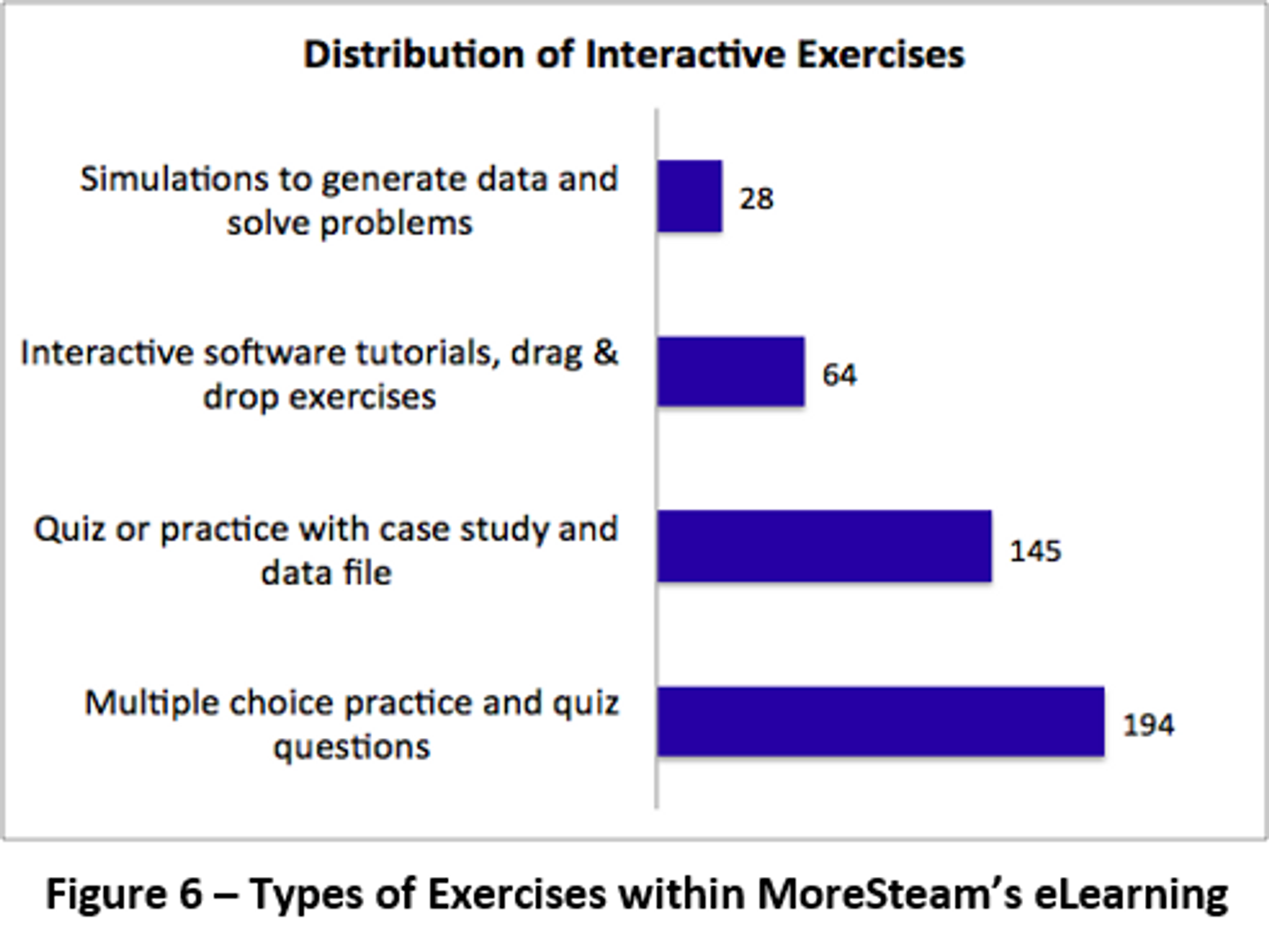
Effectiveness of the Blended Learning Model
Introduction
Since 2001, MoreSteam has advocated the use of blended learning models for Lean Six Sigma training. We believe that proficiency in process improvement skills can be achieved only through practice, and that a combination of self‐directed learning in combination with facilitated simulations and practice exercises provides an effective, scalable model for building personal capability, which is the first step toward organizational excellence.
In essence, the blended learning model 'flips' the traditional classroom by delivering new material via eLearning prior to arriving in the classroom workshop. Precious face‐to‐face classroom time is then devoted to the reinforcement of key concepts and application of critical thinking through practice‐based learning: interactive problem‐solving, simulations, and hands‐on activities. In terms of Bloom's revised taxonomy (2001), this means that students are doing the lower levels of cognitive work (gaining knowledge and comprehension) outside of class, and focusing on the higher forms of cognitive work (application, analysis, synthesis, and/or evaluation) in class, where they have the support of their peers and instructor. This model contrasts from the traditional model in which "first exposure" occurs via lecture in class, with students assimilating knowledge through homework; thus the term "flipped classroom." (Brame, C., (2013). "Flipping the classroom." Vanderbilt University Center for Teaching.)
The Research Foundation of Blended Learning
Blended models increased effectiveness at a rate of 13% for teaching declarative knowledge and 20% for procedural knowledge. — Published Academic Research
Our belief is founded in the research on the effectiveness of learning models. In recent years, blended learning or "flipping the classroom" has become the trend in both academic and corporate learning environments and has garnered the attention of some high profile publications such as The New York Times (Fitzpatrick, 2012), along with professional journals such as The Chronicle of Higher Education (Berrett, 2012) and Science (Mazur, 2009).
The most comprehensive published research was conducted by the Advance Distributed Learning (ADL) Initiative, an organization that ensures Department of Defense training takes full advantage of technological advances. The ADL's study on the "Comparative Effectiveness of Web‐Based and Classroom Instruction: A Meta‐Analysis" (2005) concluded blended models increased effectiveness at a rate of 13% for teaching declarative knowledge (information about facts or definitions) and 20% for procedural knowledge (information about how to perform a task or action).
Perspectives from the Process Improvement Community
Recently, in connection with MoreSteam's 13th Annual Best Practices in Blended Learning Conference held in September, 2015, we conducted a "Blended Training Effectiveness Study" across our client base of large global companies and leading universities. The results of this study emphatically confirm the effectiveness of blended learning, while highlighting specific factors and practices associated with better results. In short, the research provides a clear road map leading to improved results.
We first asked our blended learning customer base to quantify the effectiveness of a blended training program (+/-) compared to the classroom models previously used by the respondents. The results were impressive. Of the 29 training deployments who responded, the average percent improvement was 39.5% "better" with a median of 30% (Std. Dev 35.7%).
These data need to be considered in context, i.e., recognize that each program differs in baseline effectiveness, each utilizes differing combinations of program elements, and the measurement of improvement may include anecdotal responses. But overall, and almost uniformly, each responding organization indicated improvements to their training through adoption of a blended training approach. These findings align with the findings of the 2005 ADL Meta‐Analysis and the general body of research on blended learning.
What factors drive success?
In an effort to understand what "factors" or "learning activities" used in a blended program drive success, we next compared the responses from the nine organizations who indicated the largest increase in improvement versus eight organizations who indicated the least amount of improvement. Our comparison revealed that the use of project simulations, such as SigmaBrew DMAIC and InBox, appears to serve a critical role in program success. (Fig. 3)
Delving deeper into the drivers of success, we further evaluated the responses from the organizations indicating the greatest improvement about the most important factors contributing to the success of their training models. These most successful blended training programs identified structured timelines and deadlines as the most important factors in their success. (Fig. 4)
Reviewing all of the success factors noted, they basically fall into two buckets: 1) more structure, accountability, and support, and 2) more simulation/practice. Most of the factors noted have nothing to do with the training itself, but rather the management, structure, expectations, support, and follow‐up around the training.
When respondents who experienced the least improvement in their training models were asked what they would "do‐over" when redesigning their blended model, their top answer was to incorporate more simulations. (Fig. 5) This finding corresponds to the observed gap of learning activities used between the most improved and least improved groups in the earlier question.
Conclusions
The results of the survey are consistent with contemporary research studies, along with our general observations of training programs over the course of many years using various models and technologies. Considering the importance of gaining foundational knowledge and comprehension outside of the classroom, in order to allocate classroom time to higher level cognitive practice, MoreSteam has developed the most effective eLearning in the industry.
Key benefits include:
- Self‐directed: The ADL Initiative noted that eLearning students learned more when given a high level of learner control. MoreSteam students have the flexibility to explore the online material in the format presented or skip over content they've already mastered. Previous material may be reviewed at any time.
- Engaging: Students retain more knowledge when they apply concepts in close proximity to the initial presentation of the material. The practice‐based exercises engage students mentally and physically, while helping them to remember the material.
- Responsive: The practice questions, quizzes, exercises, and simulations provide immediate feedback. The comprehensive scope of the interactive exercises in MoreSteam's eLearning is illustrated in Fig. 6.
- Accessible: Online training is available wherever you have an Internet connection and a browser, on demand at the point of use, and at the time of need.
All of these eLearning benefits are available at a far lower cost than classroom training, with reduced travel and less time away from work.
Other Factors of Consideration in a Successful Blended Learning Model
We believe the most challenging issues related to building organizational capability revolve around structural issues that are present whether a blended learning model is used or not. At the heart of the training infrastructure are human factors. More specifically: student/candidate selection, giving the students time to learn (at their own pace and with practice included), setting learning/completion expectations and accountability, project selection and support, and coaching support, remain important success factors regardless of the mode of training delivery. If these factors are considered and controlled, a blended learning model can achieve excellent results.

Bill Hathaway
CEO
MoreSteam








